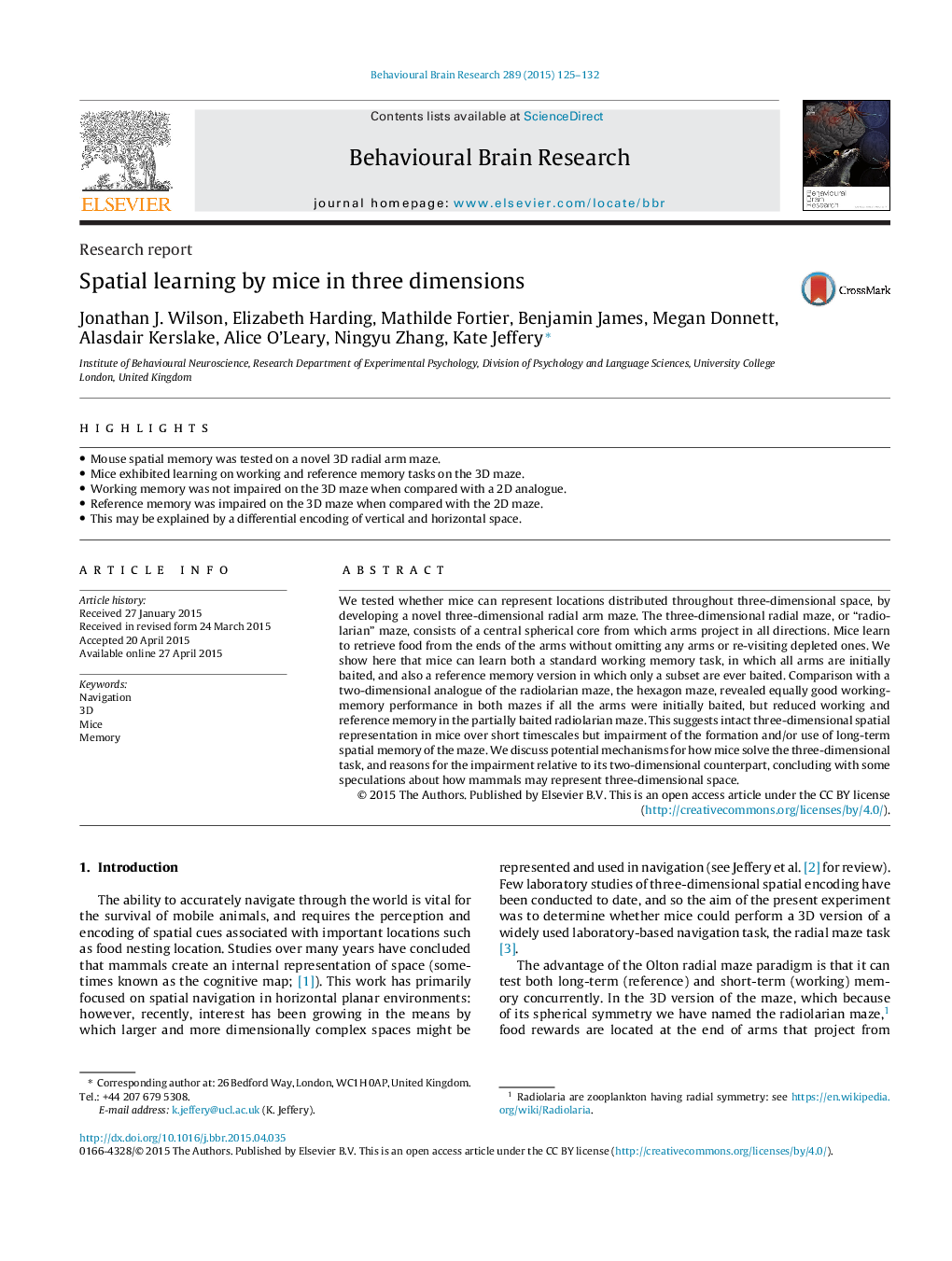| Article ID | Journal | Published Year | Pages | File Type |
|---|---|---|---|---|
| 6256746 | Behavioural Brain Research | 2015 | 8 Pages |
â¢Mouse spatial memory was tested on a novel 3D radial arm maze.â¢Mice exhibited learning on working and reference memory tasks on the 3D maze.â¢Working memory was not impaired on the 3D maze when compared with a 2D analogue.â¢Reference memory was impaired on the 3D maze when compared with the 2D maze.â¢This may be explained by a differential encoding of vertical and horizontal space.
We tested whether mice can represent locations distributed throughout three-dimensional space, by developing a novel three-dimensional radial arm maze. The three-dimensional radial maze, or “radiolarian” maze, consists of a central spherical core from which arms project in all directions. Mice learn to retrieve food from the ends of the arms without omitting any arms or re-visiting depleted ones. We show here that mice can learn both a standard working memory task, in which all arms are initially baited, and also a reference memory version in which only a subset are ever baited. Comparison with a two-dimensional analogue of the radiolarian maze, the hexagon maze, revealed equally good working-memory performance in both mazes if all the arms were initially baited, but reduced working and reference memory in the partially baited radiolarian maze. This suggests intact three-dimensional spatial representation in mice over short timescales but impairment of the formation and/or use of long-term spatial memory of the maze. We discuss potential mechanisms for how mice solve the three-dimensional task, and reasons for the impairment relative to its two-dimensional counterpart, concluding with some speculations about how mammals may represent three-dimensional space.
